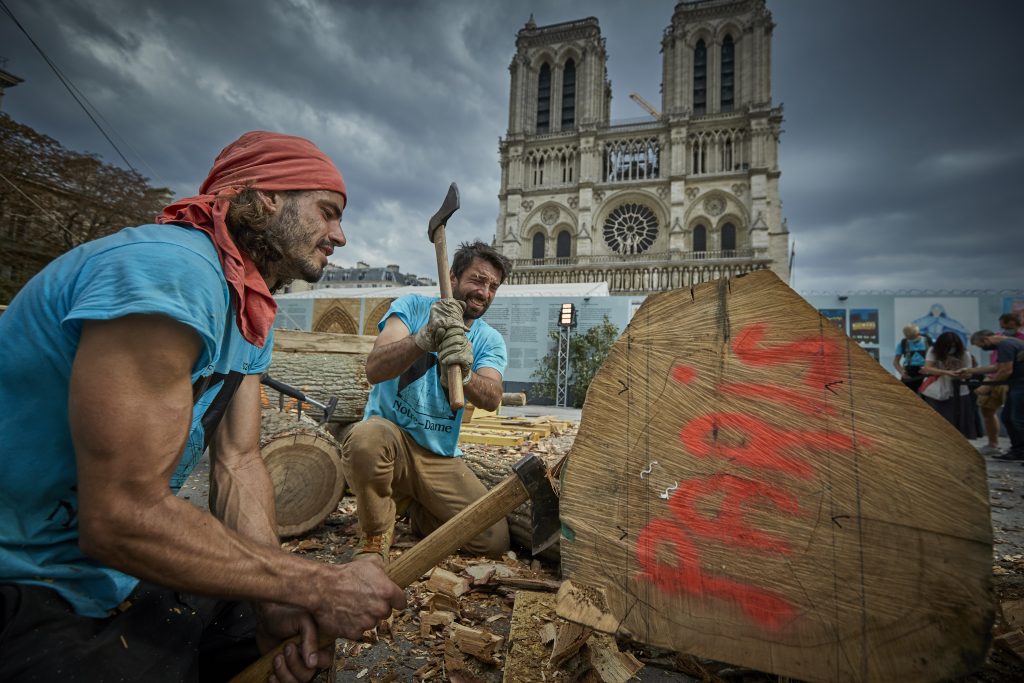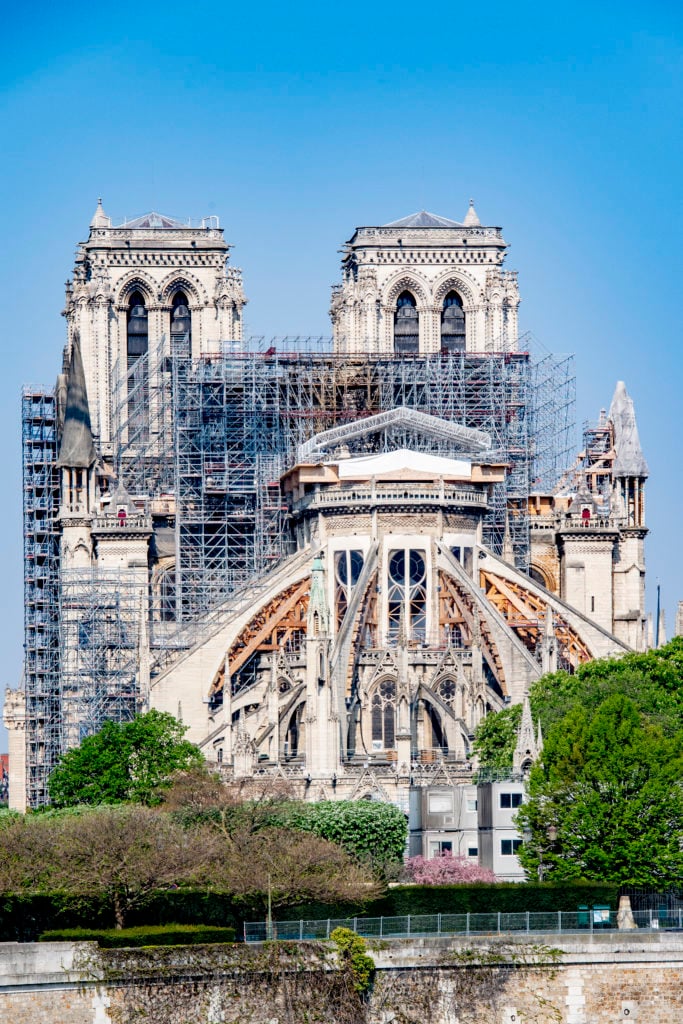Politics
The Organization in Charge of Rebuilding Notre Dame Must Be More Transparent About Its Use of Donations, a French Court Says
The court found that $5.8 million in donated funds had been misused.

The court found that $5.8 million in donated funds had been misused.

Sarah Cascone

The French court of auditors has published a report insisting that the donations received to help rebuild Paris’s Notre-Dame cathedral must not be used to fund the public body that is overseeing the restoration, but rather to directly fund the cathedral’s reconstruction.
The world rallied to save the famed church when a devastating blaze tore through the 850-year-old structure on April 15, 2019, collapsing the roof and spire and threatening the structural stability of its two towers. Within hours, millions of dollars had been pledged to restore the world-renowned landmark, including a €300 million ($340 million) pledge from billionaire art collectors and businessmen François Pinault and Bernard Arnault.
The court says the donations—which so far amount to €825 million ($967 million) in pledged funds—should be used exclusively to pay for the reconstruction of the cathedral, including training heritage apprentices on site. The public body overseeing the operation, on the other hand, must be supported with public funds, according to the court, to honor the intent of the donors.
The auditors found that the organization running the project, led by retired military general Jean-Louis Georgelin, was wrongly using €5 million ($5.8 million) in funds each year to pay the salaries of its 40-person staff, to rent the building they are using, and to cover other costs such as communications. This is in violation of the law passed on July 16, 2019 to regulate the restoration work and related expenses.

A photograph taken on December 26, 2019, shows a giant crane outside the Notre-Dame Cathedral in Paris, which was partially destroyed when fire broke out beneath the roof. Photo by Stephane de Sakutin/AFP via Getty Images.
“There is no misuse or wastage [of funds] on the part of the public establishment and the companies that intervened in the aftermath of the fire,” said Christophe Rousselot, general delegate of the Notre Dame Foundation, in a statement.
The court recommends more transparency on the use of funds and the creation of a yearly subsidy from the Ministry of Culture to support the project.
This level of scrutiny is particularly important as some pledged donations may never come through, particularly in light of the global health crisis—as of the start of the year, donors of some €640 million ($716 million) in funding still had not made good on their commitments. (The bulk of initial funds reportedly came from $39 million in small donations by 46,000 people and 60 businesses.)

View of Notre Dame Cathedral in Paris as work paused. Photo by Robin Utrecht/Echoes Wire/Barcroft Studios/Future Publishing/Getty Images.
Despite delays due to the spring lockdown, French President Emmanuel Macron has promised to rebuild Notre Dame in time for the 2024 Olympics, scheduled to be held in Paris. The International Olympic Committee has donated €500,000 ($544,000) to help meet that goal.
The process of rebuilding the cathedral has also proved controversial architecturally, with Macron initially planning a controversial international architectural competition to redesign the fallen spire, itself built in 1859 to replace the 13th-century original.
Those plans were scrapped at the recommendation of the National Heritage and Architecture Commission, after the French Senate passed a bill requiring the spire be rebuilt as it was.
That means construction workers will use wood—a material that is more fire-resistant than you might think—and traditional techniques to rebuild the 25 trusses, called “the forest,” that will hold up the roof.
Last month, a group called Carpenters Without Borders staged a carpentry demonstration outside the cathedral on European Heritage Day, building and raising up a three-ton oak truss by hand, just as would have been done during the Medieval era.
“We made the right choice in choosing to rebuild the carpentry identically, in oak from France,” Georgelin told the Associated Press, noting that the demonstration “shows us the method by which we will rebuild the framework, truss after truss.”
The road to rebuild remains a long one, however, as carpentry work cannot begin inside the cathedral until the damaged stonework has been repaired—the project’s forestry expert is looking to 2022. Currently, workers are carefully removing melted scaffolding, erected ahead of the fire for renovations, from the exterior of the church. The process began in June and is expected to be completed this month.